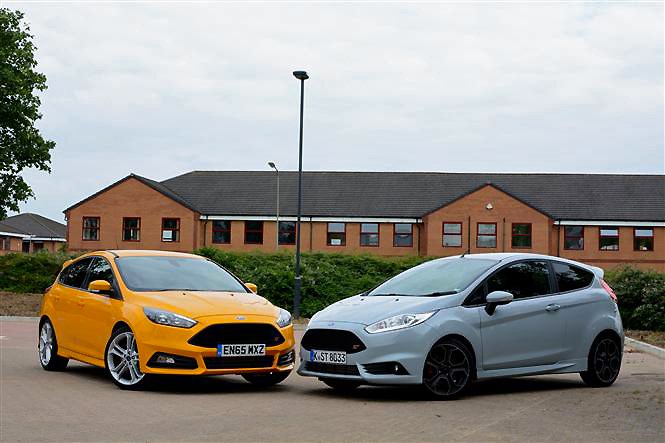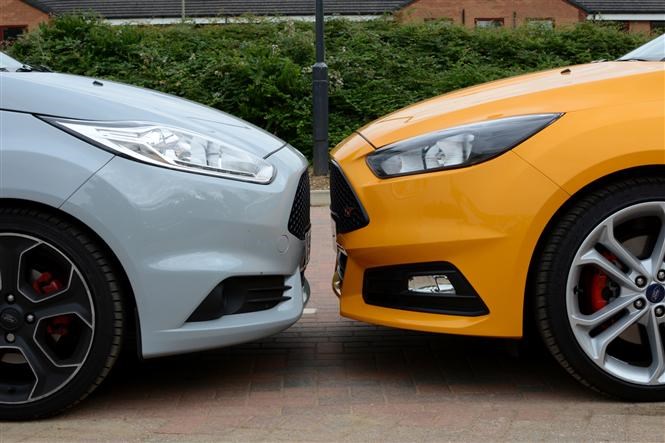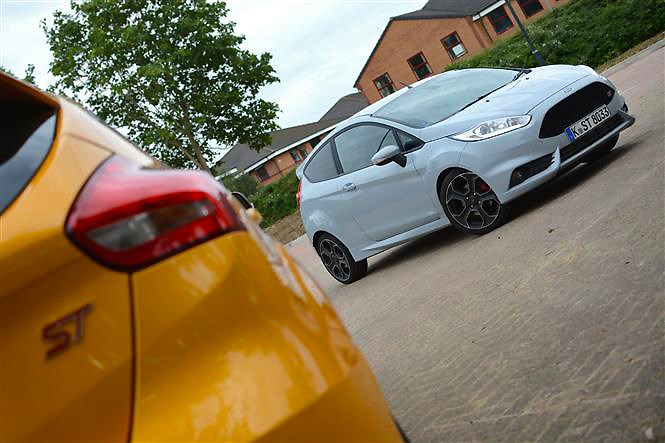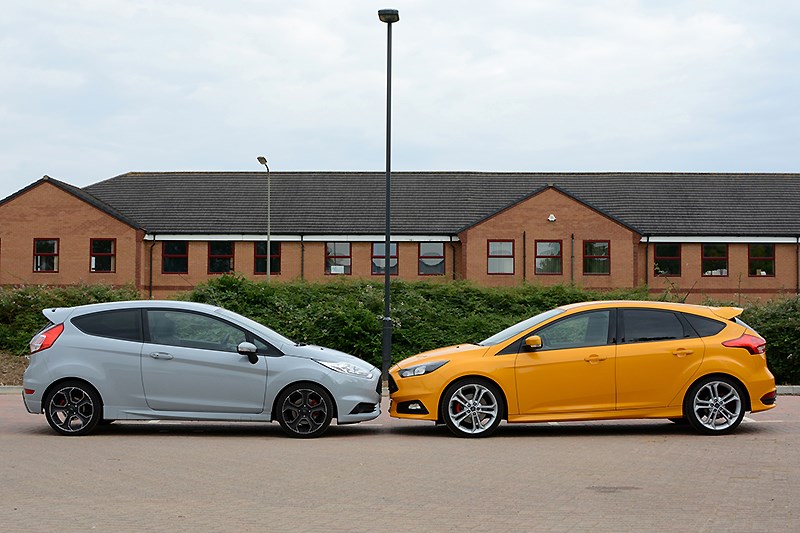For those wanting a sporting supermini, the Ford Fiesta ST has been a popular choice since it was launched in 2013. With a more entertaining drive and a lower list price than its rivals (chiefly Renault Clio Renault Sport 200 and Peugeot 208 GTi), this hotted-up supermini has found a spot on many people’s driveways in the UK.
In 2016, Ford introduced a limited-run ST200 version to celebrate 40 years of the Fiesta in production. However with a price of £22,895, this brings the flagship hot-hatch right into the firing line of its bigger sibling: the Ford Focus ST-1.
Since the bigger car costs £22,945 and comes with more doors, more power, better refinement and, ultimately, more natural capability on the road, the Focus builds a strong case against the Fiesta.
So, if you have £23,000 to spend on a fast Ford, which one makes the best choice?
Base-spec meets top-of-the-range
Both cars suffer from a slight case of ‘what you see is what you get’ in their respective trim levels. In relation to the other ST variants in the range, both have limited colour choices and a sparse options list.

The entry-level Focus ST-1 is only available in four colours (red, white, black or silver), with no optional extras available at all. Luckily the ST-1 looks exactly the same as the other models in the ST range, so you’d be hard-pressed to notice. The model pictured here features optional Tangerine Scream paint and 19-inch wheels only available on ST-2 and ST-3 models.
The Fiesta ST200 on the other hand has a limited range of options as it’s based on the top-spec Fiesta ST-3. You can choose any colour you like as long as it’s Storm grey, but since it’s unique to the ST200 – along with its black alloy wheels and Recaro seats – the Fiesta looks and feels a bit more special out of the two. This could be the answer for those looking for something a bit more exclusive.
A five-door version of the standard Fiesta ST was introduced in October 2016 which does not apply to the ST200, so for maximum practicality, the Focus is still the best way to go.
Costs
The official fuel consumption figure for the Focus ST is 41.5mpg with the Fiesta rather better at 46.3mpg. However, from our tests we’d expect to see a maximum figure reaching 15% below each of these figures in real-world driving conditions. Unsurprisingly the Focus will also be higher to tax at £185 per year, with the Fiesta at £130 – the equivalent of a free tank of fuel each year.

Our data shows how after three years and 30,000 miles, the Focus will still beat the Fiesta on residual values despite the Fiesta’s limited production run. The Focus is expected to retain 45% of its price compared to the Fiesta’s 44%. We suspect the Fiesta will require an extra few years before the values begin to make themselves worthwhile.
Verdict
The Focus is the more capable performer on the road. You sit lower, the ride is more comfortable, it feels more composed and is the more relaxing choice on longer journeys. It’s the faster and more polished car out of the two.
At this price level, the Fiesta makes less sense as a new buy – especially when the basic Fiesta ST-1 offers most of the thrills for £5,000 less. The sense of enjoyment is far greater though: the smaller footprint brings a higher sense of agility and its potential flaws – such as the firmer ride, raised seating position and high road noise, all add a level of drama to the experience rather than detract from it.
The Focus is the better all-rounder, but the Fiesta is the most entertaining. If you are looking for something a bit more special, the unique additions fitted to the ST200 lends itself an edge over the Focus ST. Provided the relative lack of space isn’t the deciding factor, this is the winner.
For more details on each car, you can find our full review on the Ford Focus ST here and the Fiesta ST200 road test here.

Just so you know, we may receive a commission or other compensation from the links on this website - read why you should trust us.




